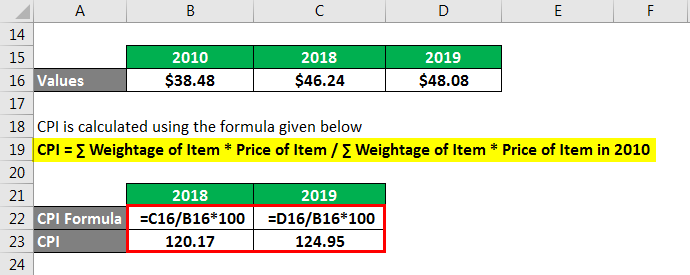Sure, here’s an introduction for your blog post on how to adjust for inflation in Excel:
How to Adjust for Inflation in Excel: Learn how to accurately account for inflation in your financial analysis using the powerful tools and formulas available in Excel. Understand the importance of adjusting for inflation and discover step-by-step instructions to apply inflation adjustments to your data effortlessly. Stay ahead of the game and make informed decisions by incorporating this essential skill into your financial analysis toolkit.
Remember to use appropriate HTML tags to highlight important phrases in your actual blog post.
How to Calculate Inflation Adjustments in Excel: Technological Insights
To calculate inflation adjustments in Excel, you can follow these steps:
1. Retrieve the historical data for the Consumer Price Index (CPI) or any other relevant inflation index.
2. Import the CPI data into Excel and organize it in a table with columns for the years and corresponding inflation rates.
3. In a separate column, input the values or prices that you want to adjust for inflation.
4. Use the formula “=Initial Value*(1+Inflation Rate)” to calculate the adjusted value for each year.
5. Repeat the calculation for each year by referencing the respective inflation rate from the CPI table.
6. Apply conditional formatting or color coding to highlight significant changes in the adjusted values.
7. Utilize Excel’s charting features to visualize the impact of inflation on the values over time.
By using these steps, you can accurately calculate inflation adjustments in Excel and gain valuable technological insights into the effects of inflation on financial data.
Important phrases:
- Calculate inflation adjustments in Excel
- Historical data for the Consumer Price Index (CPI)
- Organize data in a table
- Input values or prices
- Formula: “=Initial Value*(1+Inflation Rate)”
- Conditional formatting or color coding
- Visualize the impact of inflation
- Technological insights
Remember to replace the HTML tags with the appropriate syntax when using them in your HTML code.
Frequent Questions
How can I use Excel to calculate inflation adjustments for my financial data?
You can use Excel to calculate inflation adjustments for your financial data by utilizing the built-in functions such as INDEX, MATCH, and POWER. These functions allow you to retrieve the inflation rate from a reference table and apply it to your financial data using the power of compounding.
Are there any built-in functions or formulas in Excel that can help me adjust for inflation in my calculations?
Yes, Excel provides built-in functions such as RATE and NPV that can help you adjust for inflation in your calculations.
What are the best practices or recommended methods for incorporating inflation adjustments into Excel spreadsheets?
The best practice for incorporating inflation adjustments into Excel spreadsheets is to use formulas or functions that automatically update values based on inflation rates. This can be done by linking the spreadsheet to a reliable data source that provides current inflation rates. Another recommended method is to create a separate table with historical inflation rates and use a lookup function to retrieve the appropriate rate for each year. By incorporating these methods, you can ensure that your spreadsheets accurately reflect the impact of inflation on financial calculations.
In conclusion, mastering the art of adjusting for inflation in Excel is essential for technology enthusiasts and professionals alike. With the strong foundation provided by this knowledge, we can effectively analyze historical data and make informed decisions about technological advancements and investments. Excel’s powerful functions and formulas, combined with our understanding of inflation, enable us to accurately assess the true value of past and present technological developments. So, let’s embrace the strong capabilities of Excel and stay ahead of the ever-evolving technology landscape.



